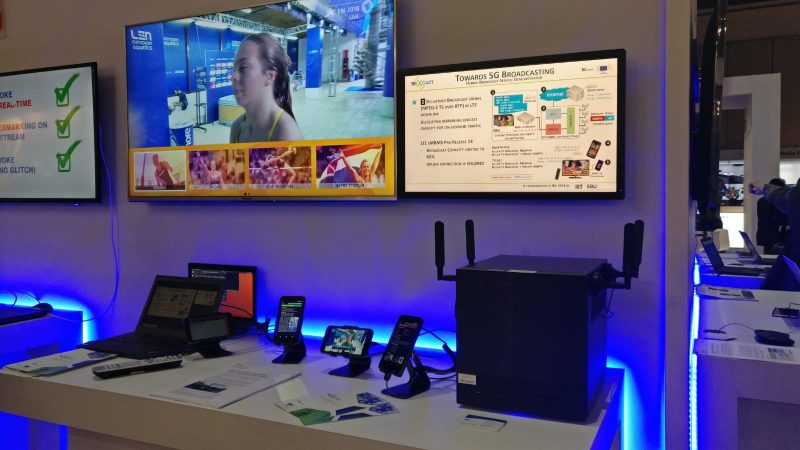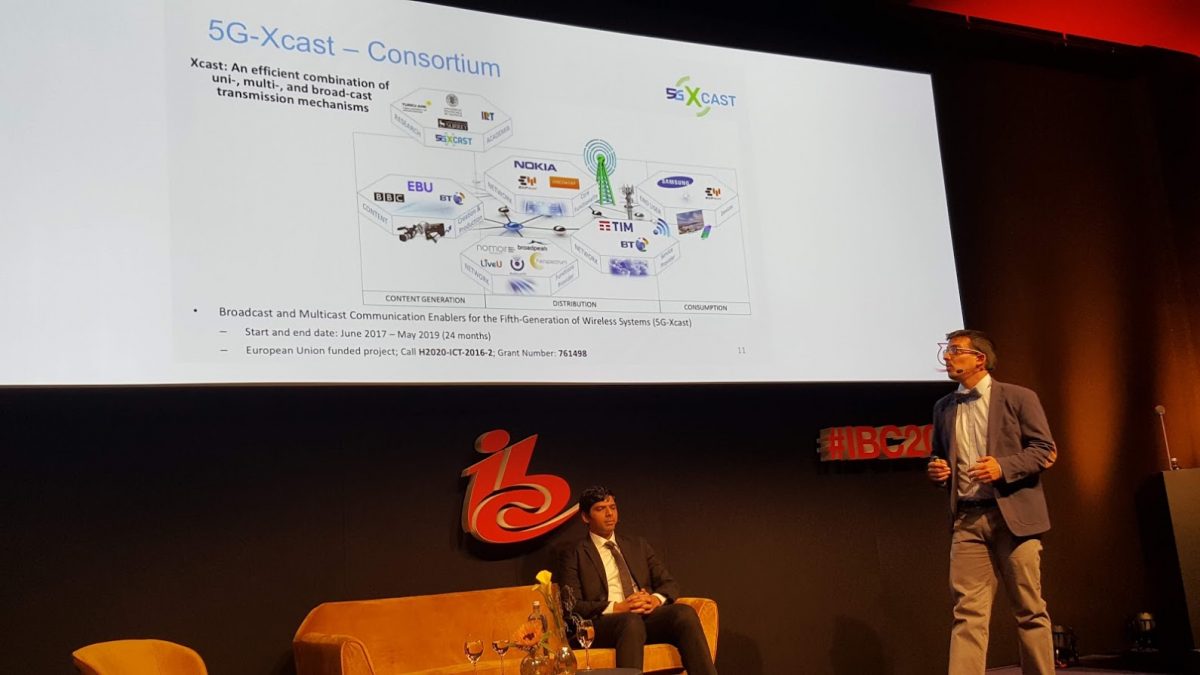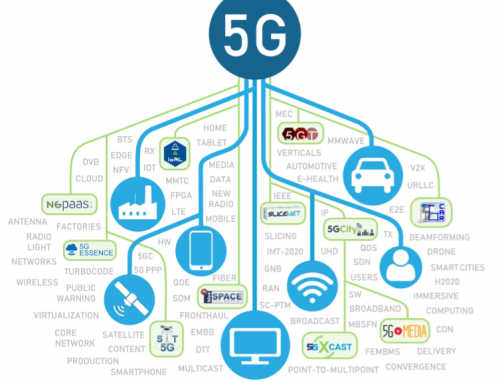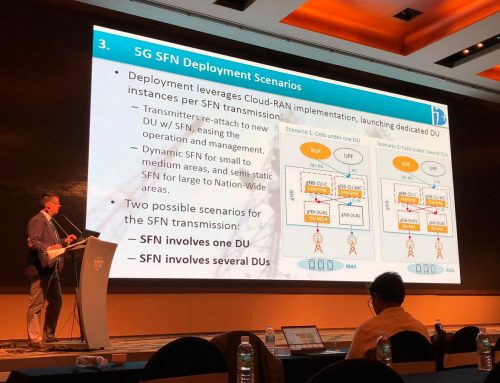During the last edition of the International Broadcasting Congress (IBC 2018), 5G-Xcast project was involved in different talks and practical demonstrations about the use of multicast and broadcast solutions for the new 5G system.
Talks
5G-Xcast project manager, Dr. David Gomez Barquero (Universitat Politecnica de Valencia), and 5G-Xcast technical manager during the first half of the project, Dr. Athul Prasad (Nokia), gave a masterclass entitled “5G-Xcast – A Unified Framework for Common Content Delivery in 5G”. The masterclass provided an overview and current status of 5G in terms of key features, end-to-end system architecture, standards evolution and potential deployment options. Based on the work done in 5G-Xcast project, the masterclass discussed the use of multicast / broadcast technologies for 5G as a key enabler for supporting diverse set of verticals and disruptive use cases – including the future evolution of media and entertainment, public safety, internet-of-things. The talk also discussed why 5G is different from previous generations in its inherent immense potential for significant value creation through massive scale access and connectivity.

Dr. David Gomez-Barquero also gave a presentation about the status of 5G broadcast in 3GPP during the Technical Committee meeting of the FOBTV (Future of Broadcast Television Initiative).

IRT/EBU Demonstration
IRT in collaboration with the EBU performed a demonstration about how audiovisual content produced in the state-of-the-art formats both live and on-demand can be distributed to large audiences in the 5G environment. As part of the 5G-Xcast project, the demonstration was performed using the LTE eMBMS technology to deliver live TV content and signalling for add-on services based on the HbbTV standard. Both services were transmitted in MPEG TV streams to smartphones and virtual set-top-boxes on TV devices.

Broadpeak Demonstration
Broadpeak performed a practical demonstration on path adaptation for live content delivery of unicast and multicast services. In particular, the demo showed how unicast and multicast live content can be adapted to the delivery path for three different user contexts related to both “at home” and “on the go” situations. The solution will be integrated within the 5G-Xcast framework, where a network-agnostic content distribution framework will allow to optimise network resources dynamically.

More details about the aforementioned talks and demonstrations can be obtained by clicking on the links below:





